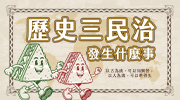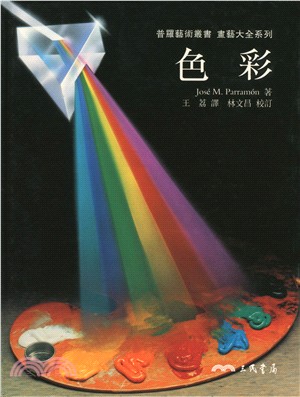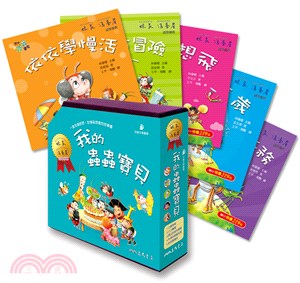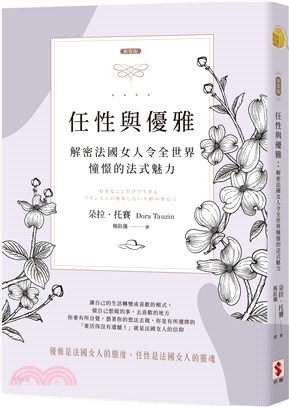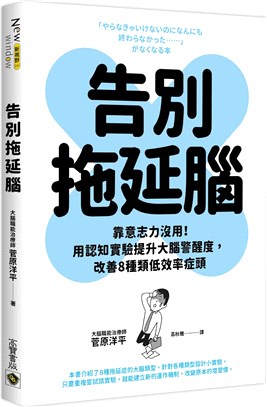Product Design for Manufacture and Assembly
商品資訊
系列名:Manufacturing Engineering and Materials
ISBN13:9781420089271
出版社:CRC PRESS
作者:Geoffrey Boothroyd; Peter Dewhurst; Winston A. Knight
出版日:2010/12/08
裝訂/頁數:平裝/709頁
規格:25.4cm*17.8cm*3.8cm (高/寬/厚)
版次:3
定價
:NT$ 9750 元優惠價
:90 折 8775 元
若需訂購本書,請電洽客服 02-25006600[分機130、131]。
商品簡介
目次
相關商品
商品簡介
Hailed as a groundbreaking and important textbook upon its initial publication, the latest iteration of Product Design for Manufacture and Assembly does not rest on those laurels. In addition to the expected updating of data in all chapters, this third edition has been revised to provide a top-notch textbook for university-level courses in product design and manufacturing design. The authors have added a comprehensive set of problems and student assignments to each chapter, making the new edition substantially more useful.
See what’s in the Third Edition:
* Updated case studies on the application of DFMA techniques
* Extended versions of the classification schemes of the features of products that influence the difficulty of handling and insertion for manual, high-speed automatic, and robot assembly
* Discussions of changes in the industry such as increased emphasis on the use of surface mount devices
* New data on basic manufacturing processes
* Coverage of powder injection molding
Recognized as international experts on the re-engineering of electro-mechanical products, the methods and guidelines developed by Boothroyd, Dewhurst, and Knight have been documented to provide significant savings in the product development process. Often attributed with creating a revolution in product design, the authors have been working in product design manufacture and assembly for more than twenty-five years. Based on theory yet highly practical, their text defines the factors that influence the ease of assembly and manufacture of products for a wide range of the basic processes used in industry. It demonstrates how to develop competitive products that are simpler in configuration and easier to manufacture with reduced overall costs.
See what’s in the Third Edition:
* Updated case studies on the application of DFMA techniques
* Extended versions of the classification schemes of the features of products that influence the difficulty of handling and insertion for manual, high-speed automatic, and robot assembly
* Discussions of changes in the industry such as increased emphasis on the use of surface mount devices
* New data on basic manufacturing processes
* Coverage of powder injection molding
Recognized as international experts on the re-engineering of electro-mechanical products, the methods and guidelines developed by Boothroyd, Dewhurst, and Knight have been documented to provide significant savings in the product development process. Often attributed with creating a revolution in product design, the authors have been working in product design manufacture and assembly for more than twenty-five years. Based on theory yet highly practical, their text defines the factors that influence the ease of assembly and manufacture of products for a wide range of the basic processes used in industry. It demonstrates how to develop competitive products that are simpler in configuration and easier to manufacture with reduced overall costs.
目次
Introduction
What Is Design for Manufacture and Assembly?
History
Implementation of Design for Assembly
Design for Manufacture
Producibility Guidelines
How Does DFMA Work?
Falsely Claimed Reasons for Not Implementing DFMA
What are the Advantages of Applying DFMA during Product Design?
Overall Impact of DFMA on U.S. Industry
Selection of Materials and Processes
General Requirements for Early Materials and Process Selection
Selection of Manufacturing Processes
Process Capabilities
Selection of Materials
Primary Process/Material Selection
Systematic Selection of Processes and Materials
Problems
Product Design for Manual Assembly
General Design Guidelines for Manual Assembly
Development of the Systematic DFA Methodology
Assembly Efficiency
Classification Systems
Effect of Part Symmetry on Handling Time
Effect of Part Thickness and Size on Handling Time
Effect of Weight on Handling Time
Parts Requiring Two Hands for Manipulation
Effects of Combinations of Factors
Effect of Symmetry for Parts that Severely Nest or Tangle and May Require Tweezers for Grasping and Manipulation
Effect of Chamfer Design on Insertion Operations
Estimation of Insertion Time
Avoiding Jams during Assembly
Reducing Disc-Assembly Problems
Effects of Obstructed Access and Restricted Vision on Insertion of Threaded Fasteners of Various Designs
Effects of Obstructed Access and Restricted Vision on Pop-Riveting Operations
Effects of Holding Down
Manual Assembly Database and Design Data Sheets
Application of the DFA Methodology
Further Design Guidelines
Large Assemblies
Types of Manual Assembly Methods
Effect of Assembly Layout on Acquisition Times
Assembly Quality
Applying Learning Curves to the DFA Times
Electrical Connections and Wire Harness Assembly
Wire or Cable Harness Assembly
Types of Electrical Connections
Types of Wires and Cables
Preparation and Assembly Times
Analysis Method
Design for High-Speed Automatic Assembly and Robot Assembly
Design of Parts for High-Speed Feeding and Orienting
Example
Additional Feeding Difficulties
High-Speed Automatic Insertion
Example
Analysis of an Assembly
General Rules for Product Design for Automation
Design of Parts for Feeding and Orienting
Summary of Design Rules for High-Speed Automatic Assembly
Product Design for Robot Assembly
Printed Circuit Board Design for Manufacture and Assembly
Design Sequence for Printed Circuit Boards
Types of Printed Circuit Boards
Bare Board Manufacture
Terminology
Assembly of Printed Circuit Boards
Estimation of PCB Assembly Costs
Case Studies in PCB Assembly
Glossary of Terms
Design for Machining
Machining Using Single-Point Cutting Tools
Machining Using Multipoint Tools
Machining Using Abrasive Wheels
Standardization
Choice of Work Material
Shape of Work Material
Machining Basic Component Shapes
Assembly of Components
Accuracy and Surface Finish
Summary of Design Guidelines
Cost Estimating for Machined Components
Design for Injection Molding
Injection Molding Materials
The Molding Cycle
Injection Molding Systems
Injection Molds
Molding Machine Size
Molding Cycle Time
Mold Cost Estimation
Mold Cost Point System
Estimation of the Optimum Number of Cavities
Design Example
Insert Molding
Design Guidelines
Assembly Techniques
Design for Sheet Metalworking
Dedicated Dies and Pressworking
Press Selection
Turret Pressworking
Press Brake Operations
Design Rules
Design for Die Casting
Die Casting Alloys
The Die Casting Cycle
Die Casting Machines
Die Casting Dies
Finishing
Auxiliary Equipment for Automation
Determination of the Optimum Number of Cavities
Determination of Appropriate Machine Size
Die Casting Cycle Time Estimation
Die Cost Estimation
Assembly Techniques
Design Principles
Design for Powder Metal Processing
Main Stages in the Powder Metallurgy Process
Secondary Manufacturing Stages
Compaction Characteristics of Powders
Tooling for Powder Compaction
Presses for Powder Compaction
Form of Powder Metal Parts
Sintering Equipment Characteristics
Materials for Powder Metal Processing
Contributions to Basic Powder Metallurgy Manufacturing Costs
Modifications for Infiltrated Materials
Impregnation, Heat Treatment, Tumbling, Steam Treatment, and Other Surface Treatments
Some Design Guidelines for Powder Metal Parts
Powder Injection Molding
Design for Sand Casting
Sand Casting Alloys
Basic Characteristics and Mold Preparation
Sand Cores
Melting and Pouring of Metal
Cleaning of Castings
Cost Estimating
Design Rules for Sand Castings
Example Calculations
Design for Investment Casting
Process Overview
Pattern Materials
Pattern Injection Machines
Pattern Molds
Pattern and Cluster Assembly
The Ceramic Shell-Mold
Ceramic Cores
Pattern Meltout
Pattern Burnout and Mold Firing
Knockout and Cleaning
Cutoff and Finishing
Pattern and Core Material Cost
Wax Pattern Injection Cost
Fill Time
Cooling Time
Ejection and Reset Time
Process Cost per Pattern or Core
Estimating Core Injection Cost
Pattern and Core Mold Cost
Core Mold Cost
Pattern and Cluster Assembly Cost
Number of Parts per Cluster
Pattern Piece Cost
Cleaning and Etching
Shell Mold Material Cost
Investing the Pattern Cluster
Pattern Meltout
Burnout, Sinter, and Preheat
Total Shell Mold Cost
Cost to Melt Metal
Raw Base Metal Cost
Ready-to-Pour Liquid Metal Cost
Pouring Cost
Final Material Cost
Breakout
Cleaning
Cutoff
Design Guidelines
Design for Hot Forging
Characteristics of the Forging Process
The Role of Flash in Forging
Forging Allowances
Preforming During Forging
Flash Removal
Classification of Forgings
Forging Equipment
Classification of Materials
Forging Costs
Forging Die Costs
Die Life and Tool Replacement Costs
Costs of Flash Removal
Other Forging Costs
Nomenclature
Index
What Is Design for Manufacture and Assembly?
History
Implementation of Design for Assembly
Design for Manufacture
Producibility Guidelines
How Does DFMA Work?
Falsely Claimed Reasons for Not Implementing DFMA
What are the Advantages of Applying DFMA during Product Design?
Overall Impact of DFMA on U.S. Industry
Selection of Materials and Processes
General Requirements for Early Materials and Process Selection
Selection of Manufacturing Processes
Process Capabilities
Selection of Materials
Primary Process/Material Selection
Systematic Selection of Processes and Materials
Problems
Product Design for Manual Assembly
General Design Guidelines for Manual Assembly
Development of the Systematic DFA Methodology
Assembly Efficiency
Classification Systems
Effect of Part Symmetry on Handling Time
Effect of Part Thickness and Size on Handling Time
Effect of Weight on Handling Time
Parts Requiring Two Hands for Manipulation
Effects of Combinations of Factors
Effect of Symmetry for Parts that Severely Nest or Tangle and May Require Tweezers for Grasping and Manipulation
Effect of Chamfer Design on Insertion Operations
Estimation of Insertion Time
Avoiding Jams during Assembly
Reducing Disc-Assembly Problems
Effects of Obstructed Access and Restricted Vision on Insertion of Threaded Fasteners of Various Designs
Effects of Obstructed Access and Restricted Vision on Pop-Riveting Operations
Effects of Holding Down
Manual Assembly Database and Design Data Sheets
Application of the DFA Methodology
Further Design Guidelines
Large Assemblies
Types of Manual Assembly Methods
Effect of Assembly Layout on Acquisition Times
Assembly Quality
Applying Learning Curves to the DFA Times
Electrical Connections and Wire Harness Assembly
Wire or Cable Harness Assembly
Types of Electrical Connections
Types of Wires and Cables
Preparation and Assembly Times
Analysis Method
Design for High-Speed Automatic Assembly and Robot Assembly
Design of Parts for High-Speed Feeding and Orienting
Example
Additional Feeding Difficulties
High-Speed Automatic Insertion
Example
Analysis of an Assembly
General Rules for Product Design for Automation
Design of Parts for Feeding and Orienting
Summary of Design Rules for High-Speed Automatic Assembly
Product Design for Robot Assembly
Printed Circuit Board Design for Manufacture and Assembly
Design Sequence for Printed Circuit Boards
Types of Printed Circuit Boards
Bare Board Manufacture
Terminology
Assembly of Printed Circuit Boards
Estimation of PCB Assembly Costs
Case Studies in PCB Assembly
Glossary of Terms
Design for Machining
Machining Using Single-Point Cutting Tools
Machining Using Multipoint Tools
Machining Using Abrasive Wheels
Standardization
Choice of Work Material
Shape of Work Material
Machining Basic Component Shapes
Assembly of Components
Accuracy and Surface Finish
Summary of Design Guidelines
Cost Estimating for Machined Components
Design for Injection Molding
Injection Molding Materials
The Molding Cycle
Injection Molding Systems
Injection Molds
Molding Machine Size
Molding Cycle Time
Mold Cost Estimation
Mold Cost Point System
Estimation of the Optimum Number of Cavities
Design Example
Insert Molding
Design Guidelines
Assembly Techniques
Design for Sheet Metalworking
Dedicated Dies and Pressworking
Press Selection
Turret Pressworking
Press Brake Operations
Design Rules
Design for Die Casting
Die Casting Alloys
The Die Casting Cycle
Die Casting Machines
Die Casting Dies
Finishing
Auxiliary Equipment for Automation
Determination of the Optimum Number of Cavities
Determination of Appropriate Machine Size
Die Casting Cycle Time Estimation
Die Cost Estimation
Assembly Techniques
Design Principles
Design for Powder Metal Processing
Main Stages in the Powder Metallurgy Process
Secondary Manufacturing Stages
Compaction Characteristics of Powders
Tooling for Powder Compaction
Presses for Powder Compaction
Form of Powder Metal Parts
Sintering Equipment Characteristics
Materials for Powder Metal Processing
Contributions to Basic Powder Metallurgy Manufacturing Costs
Modifications for Infiltrated Materials
Impregnation, Heat Treatment, Tumbling, Steam Treatment, and Other Surface Treatments
Some Design Guidelines for Powder Metal Parts
Powder Injection Molding
Design for Sand Casting
Sand Casting Alloys
Basic Characteristics and Mold Preparation
Sand Cores
Melting and Pouring of Metal
Cleaning of Castings
Cost Estimating
Design Rules for Sand Castings
Example Calculations
Design for Investment Casting
Process Overview
Pattern Materials
Pattern Injection Machines
Pattern Molds
Pattern and Cluster Assembly
The Ceramic Shell-Mold
Ceramic Cores
Pattern Meltout
Pattern Burnout and Mold Firing
Knockout and Cleaning
Cutoff and Finishing
Pattern and Core Material Cost
Wax Pattern Injection Cost
Fill Time
Cooling Time
Ejection and Reset Time
Process Cost per Pattern or Core
Estimating Core Injection Cost
Pattern and Core Mold Cost
Core Mold Cost
Pattern and Cluster Assembly Cost
Number of Parts per Cluster
Pattern Piece Cost
Cleaning and Etching
Shell Mold Material Cost
Investing the Pattern Cluster
Pattern Meltout
Burnout, Sinter, and Preheat
Total Shell Mold Cost
Cost to Melt Metal
Raw Base Metal Cost
Ready-to-Pour Liquid Metal Cost
Pouring Cost
Final Material Cost
Breakout
Cleaning
Cutoff
Design Guidelines
Design for Hot Forging
Characteristics of the Forging Process
The Role of Flash in Forging
Forging Allowances
Preforming During Forging
Flash Removal
Classification of Forgings
Forging Equipment
Classification of Materials
Forging Costs
Forging Die Costs
Die Life and Tool Replacement Costs
Costs of Flash Removal
Other Forging Costs
Nomenclature
Index
主題書展
更多
主題書展
更多書展本週66折
您曾經瀏覽過的商品
購物須知
外文書商品之書封,為出版社提供之樣本。實際出貨商品,以出版社所提供之現有版本為主。部份書籍,因出版社供應狀況特殊,匯率將依實際狀況做調整。
無庫存之商品,在您完成訂單程序之後,將以空運的方式為你下單調貨。為了縮短等待的時間,建議您將外文書與其他商品分開下單,以獲得最快的取貨速度,平均調貨時間為1~2個月。
為了保護您的權益,「三民網路書店」提供會員七日商品鑑賞期(收到商品為起始日)。
若要辦理退貨,請在商品鑑賞期內寄回,且商品必須是全新狀態與完整包裝(商品、附件、發票、隨貨贈品等)否則恕不接受退貨。






